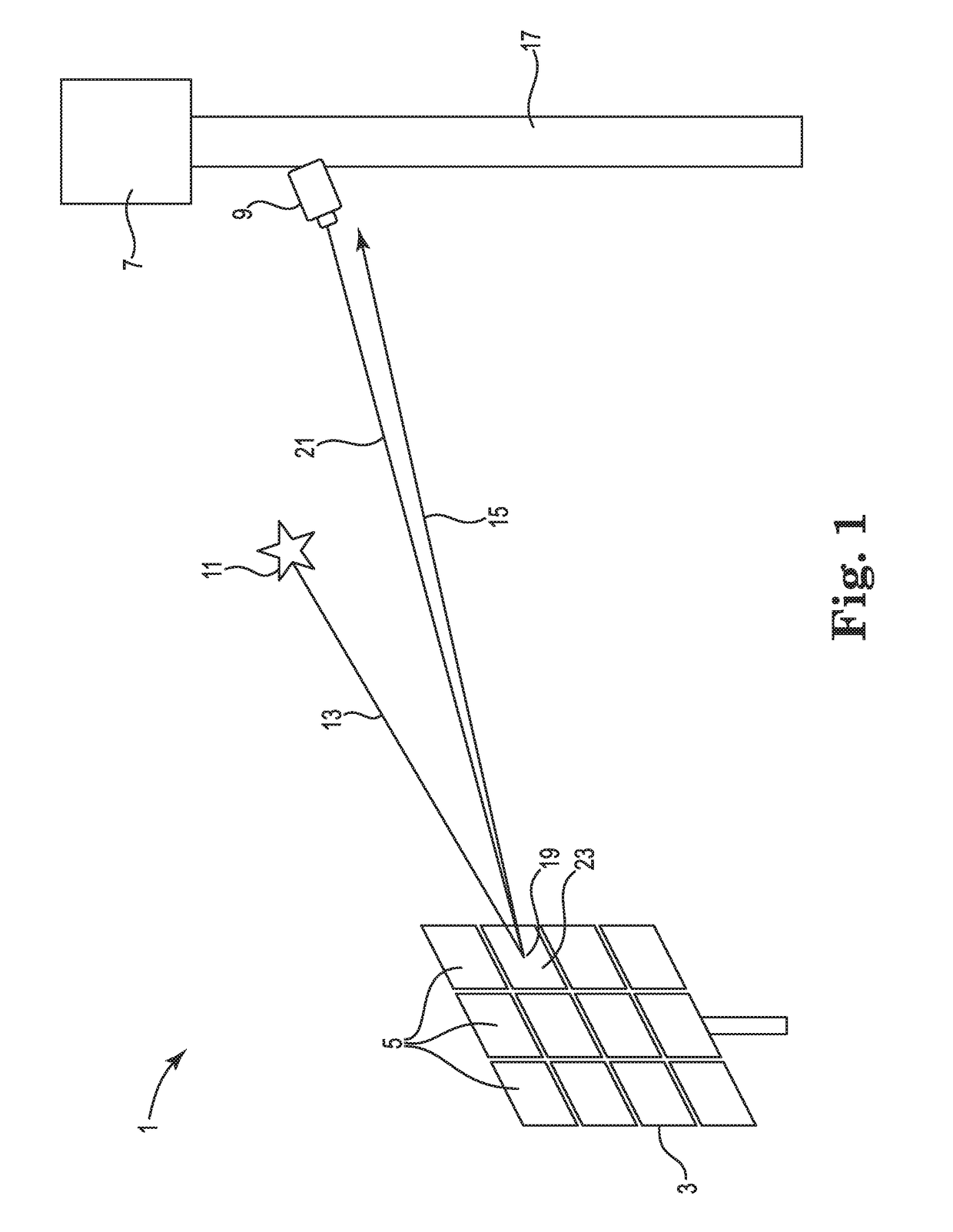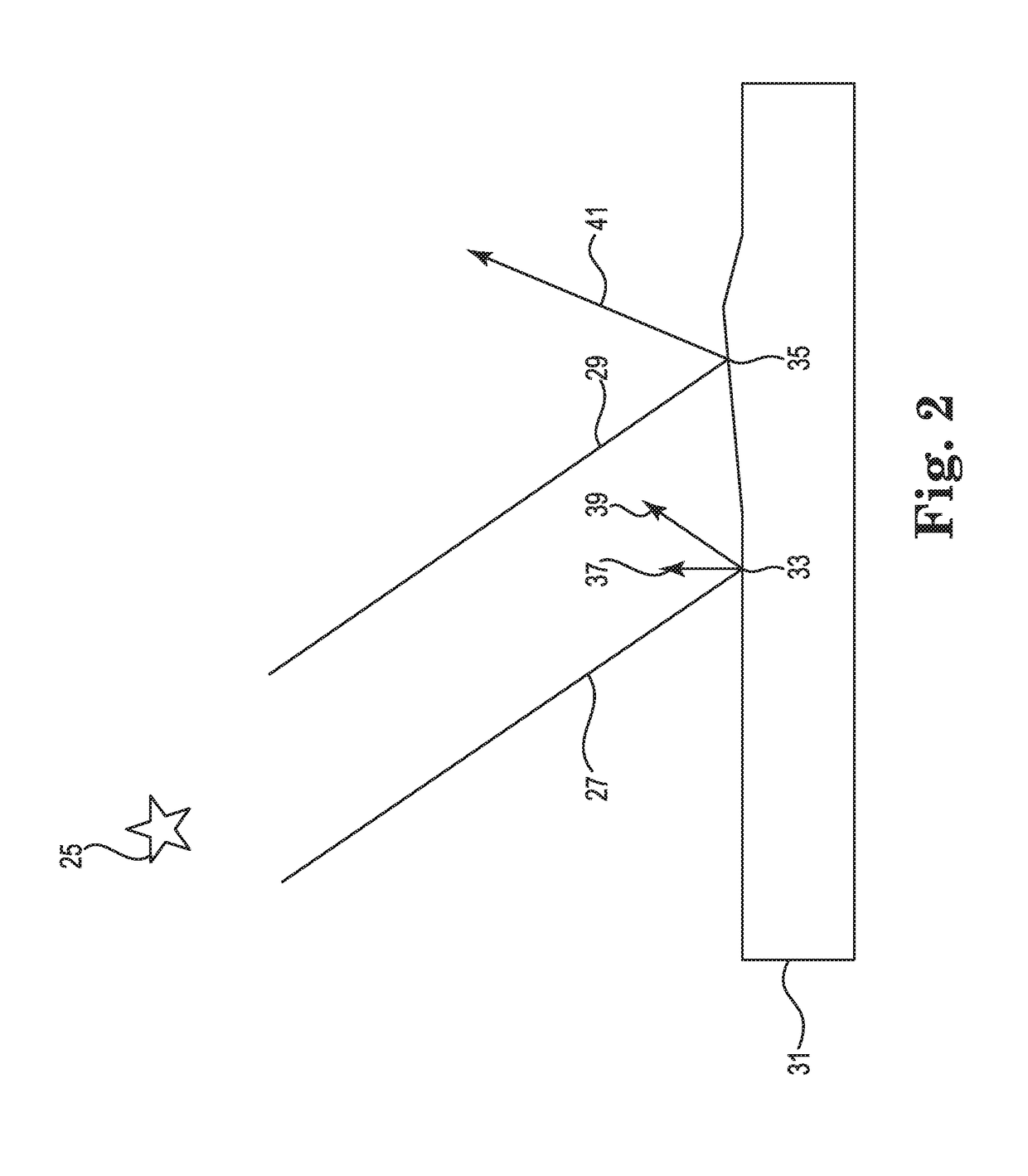Heliostat characterization using starlight
a technology of starlight and heliostats, applied in instruments, solar heat systems, lighting and heating apparatus, etc., can solve the problems of largely dropping out errors due to refraction, and achieve the effect of slow construction of slope errors and canting maps
- Summary
- Abstract
- Description
- Claims
- Application Information
AI Technical Summary
Benefits of technology
Problems solved by technology
Method used
Image
Examples
Embodiment Construction
[0099]Embodiments described herein are exemplary and do not represent all possible embodiments of the principles taught by the present invention. In particular, embodiments of the present invention have direct application in the field of concentrating solar power, particularly concentrating solar power including the use of heliostats to redirect sunlight onto a fixed focus in which concentrated sunlight may be converted into other forms of energy such as heat or electrical energy. Nevertheless, the apparatus and methods described herein can be applied and adapted by those skilled in the art for use in alternative applications in which the optical characteristics of a mirror must be measured from a distance.
[0100]As shown, in FIG. 1, an exemplary CSP system 1 can include an array of heliostats 3 that redirect and concentrate sunlight onto a focus area 7 of a tower 17. Each heliostat 3 may include one or more mirror facets 5.
[0101]An embodiment of the invention includes a digital imag...
PUM
 Login to View More
Login to View More Abstract
Description
Claims
Application Information
 Login to View More
Login to View More - R&D
- Intellectual Property
- Life Sciences
- Materials
- Tech Scout
- Unparalleled Data Quality
- Higher Quality Content
- 60% Fewer Hallucinations
Browse by: Latest US Patents, China's latest patents, Technical Efficacy Thesaurus, Application Domain, Technology Topic, Popular Technical Reports.
© 2025 PatSnap. All rights reserved.Legal|Privacy policy|Modern Slavery Act Transparency Statement|Sitemap|About US| Contact US: help@patsnap.com



